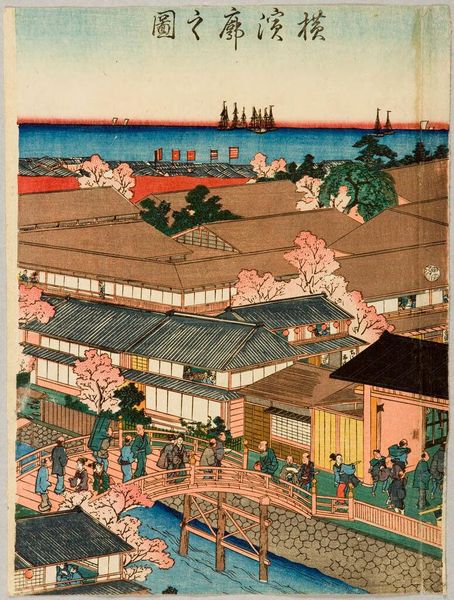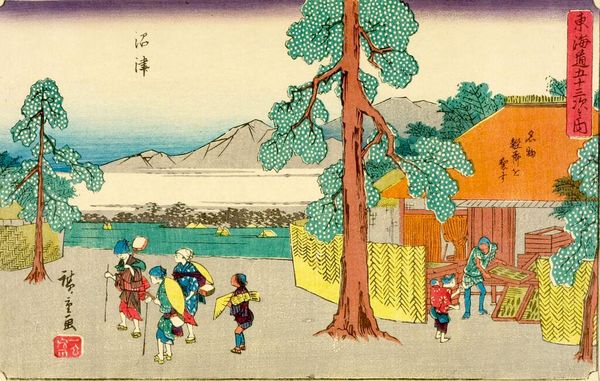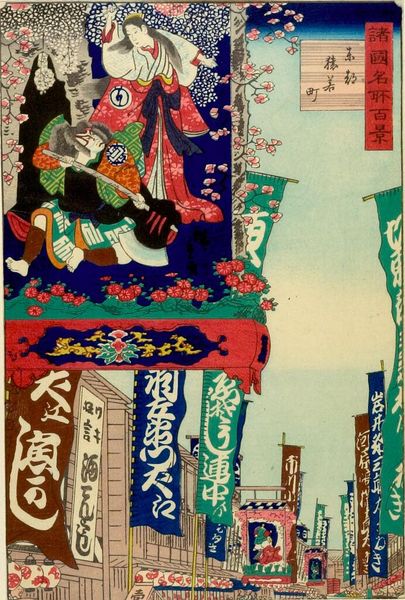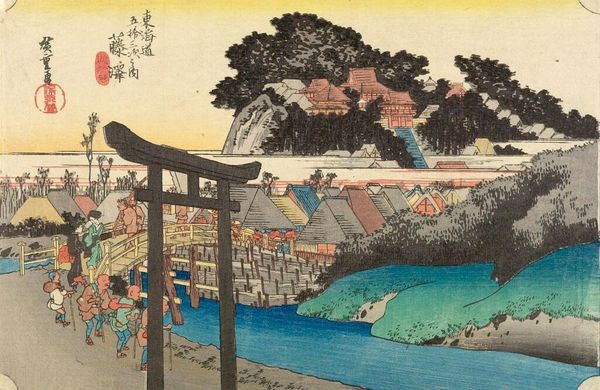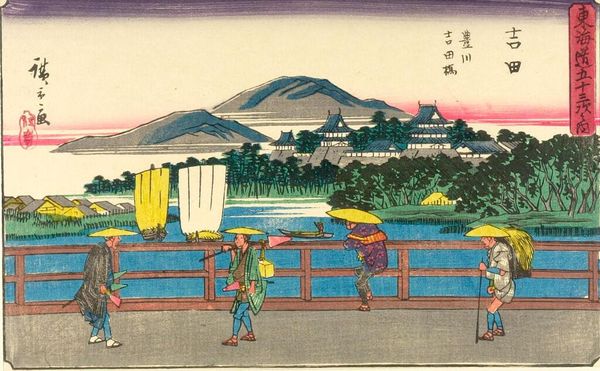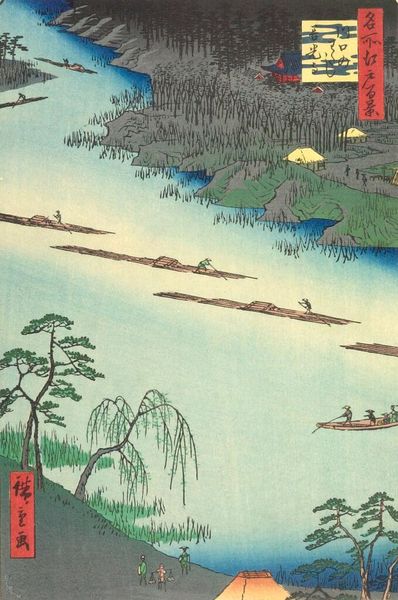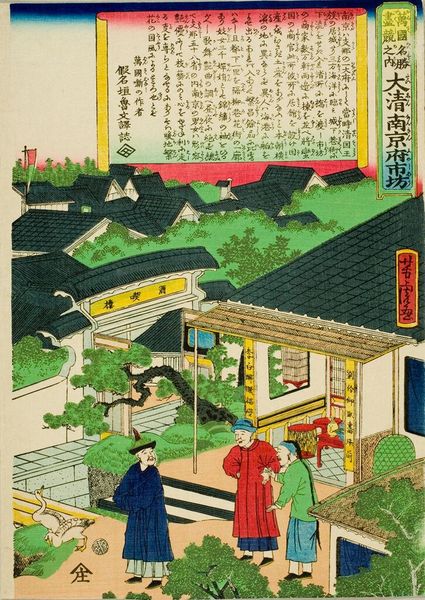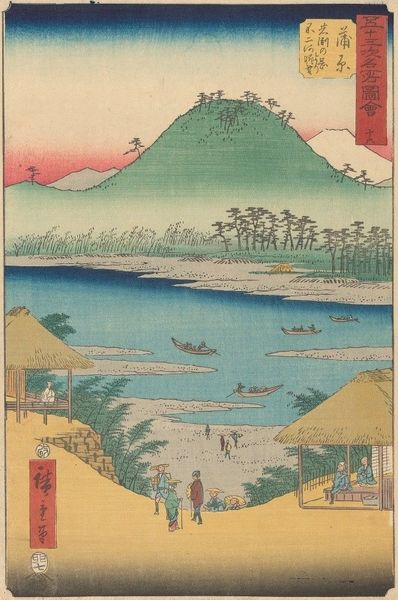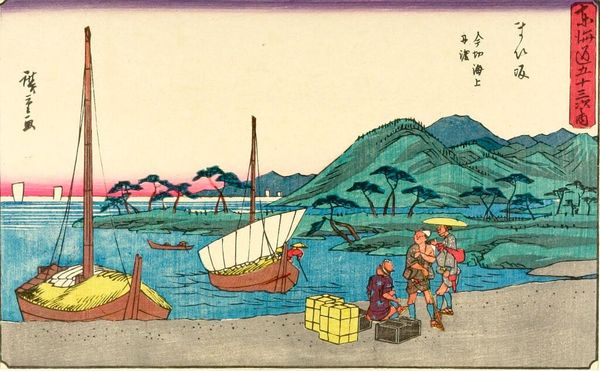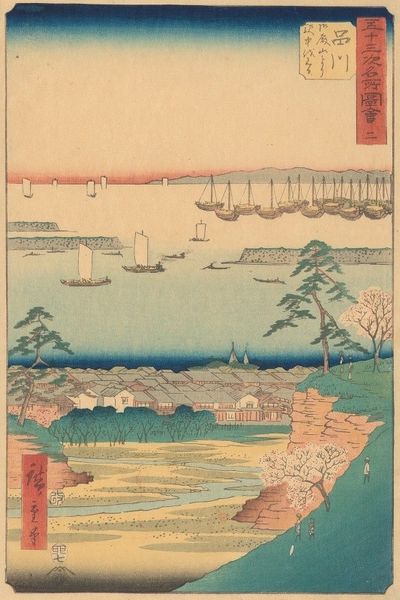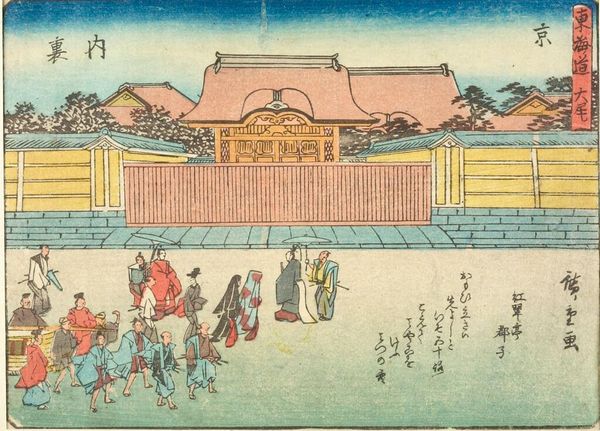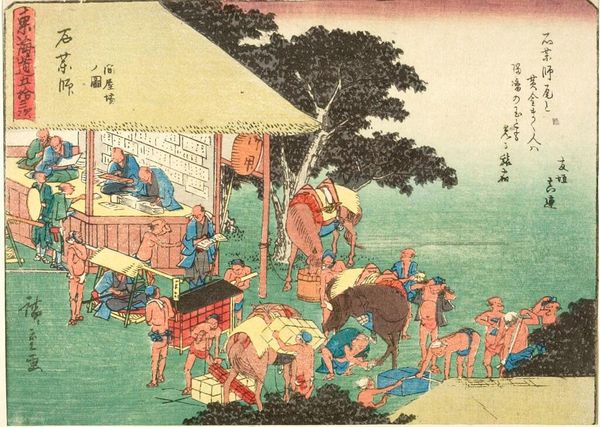
Copyright: Public Domain: Artvee
Tsukioka Yoshitoshi made this woodblock print, titled "Ashikaga Yoshimitsu Admiring the Golden Pavilion", in Japan during the late 19th century. The print depicts Ashikaga Yoshimitsu, a 14th-century Shogun, contemplating the Golden Pavilion which he commissioned as part of his retirement complex. Yoshitoshi’s print invites us to consider the cultural significance of historical figures and architectural icons in shaping Japanese identity during the Meiji era. The Golden Pavilion itself represents a fusion of architectural styles and religious influences, mirroring the complexities of Japanese society. Yoshitoshi made this print at a time when Japan was modernizing rapidly. The act of admiring the Golden Pavilion is not merely aesthetic, it also reflects an engagement with the values and traditions associated with the ruling elite. This engagement served to negotiate Japan’s place in the modern world, mediating between tradition and innovation. Historical documents, architectural plans, and cultural studies would provide valuable context for understanding the social and political dimensions of the Golden Pavilion. Ultimately, the meaning of this print emerges from its specific historical and cultural context, reminding us that art is always contingent on the society in which it is created and received.
Comments
No comments
Be the first to comment and join the conversation on the ultimate creative platform.
